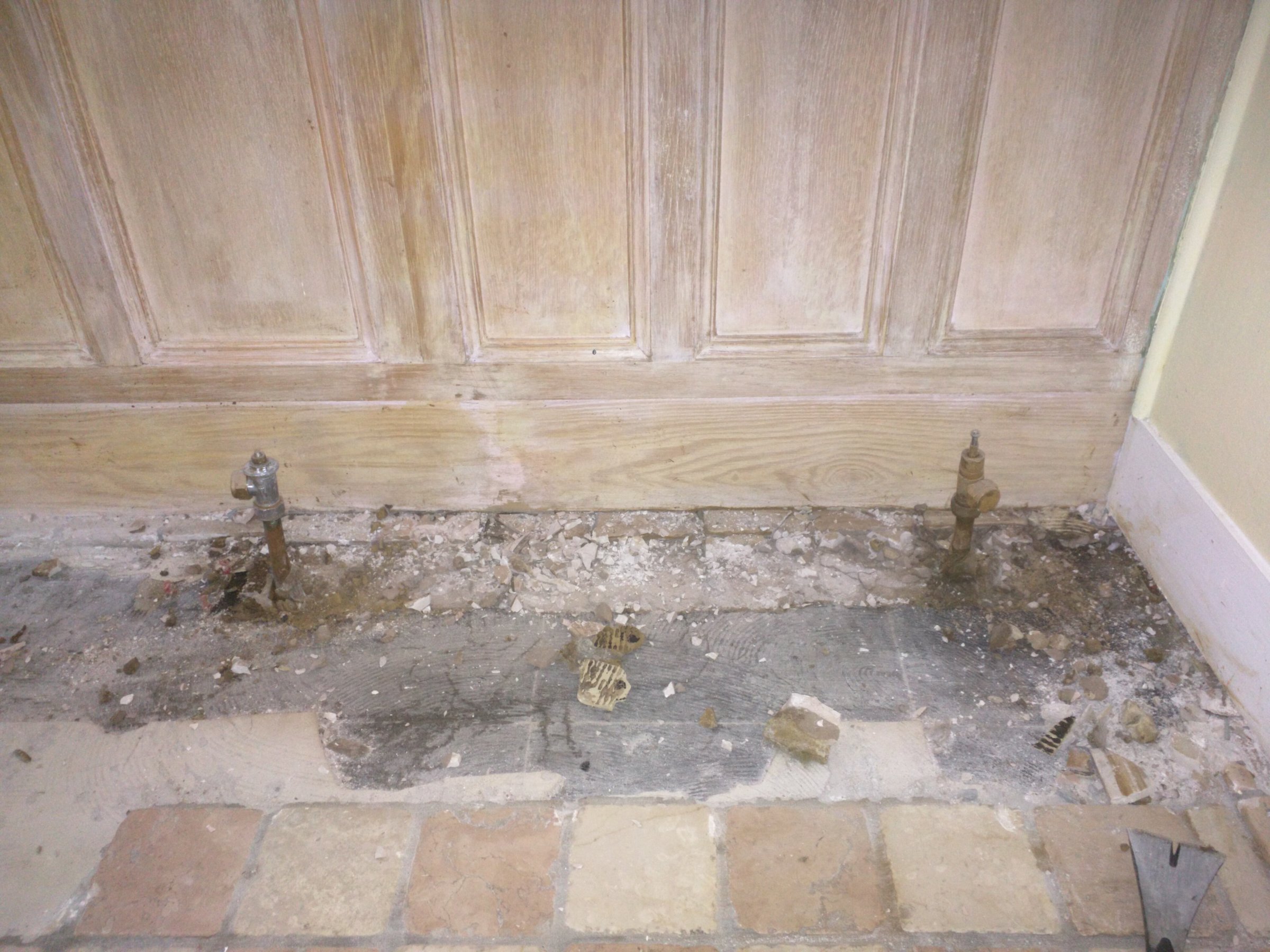- Joined
- 28 Jun 2015
- Messages
- 13
- Reaction score
- 0
- Country

Hi,
I am in the process of replacing floor tiles with engineered wood in the kitchen of the house we're moving in to. However, lifting the tiles under where a towel rail had been installed we found a nasty surprise. The pipes appear to go through a concrete slab, but around the pipes there's now loose rubble coloured brownish red around them - see pictures.
I am hoping that this is from water coming of whatever the previous owners had hung on the towel rail, rather than from the pipes themselves. There are also signs of corrosion on the outside of the towel rail (that has now been removed). Does this sounds like a reasonable explanation?
I've since lifted the loose rubble from around the pipes and now have two holes an inch or so deep around each - what do I use to fill this space before laying the engineered wood flooring?
Many thanks,
Eric
I am in the process of replacing floor tiles with engineered wood in the kitchen of the house we're moving in to. However, lifting the tiles under where a towel rail had been installed we found a nasty surprise. The pipes appear to go through a concrete slab, but around the pipes there's now loose rubble coloured brownish red around them - see pictures.
I am hoping that this is from water coming of whatever the previous owners had hung on the towel rail, rather than from the pipes themselves. There are also signs of corrosion on the outside of the towel rail (that has now been removed). Does this sounds like a reasonable explanation?
I've since lifted the loose rubble from around the pipes and now have two holes an inch or so deep around each - what do I use to fill this space before laying the engineered wood flooring?
Many thanks,
Eric



